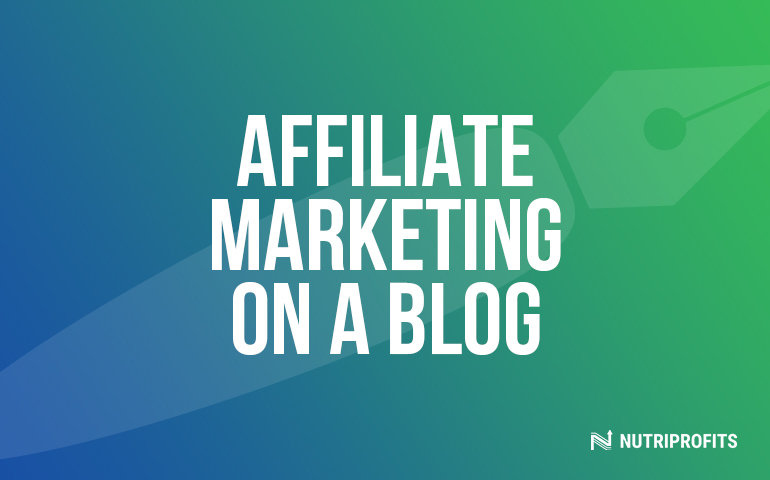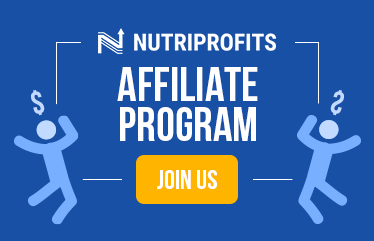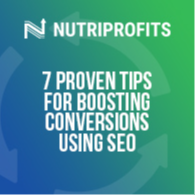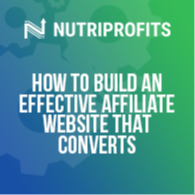How much do you know about affiliate marketing? You've probably at least heard the term. Affiliate marketing is a popular method of making money online these days. But what exactly is it? How does it work?
Put simply, affiliate marketing is an online method of earning money by helping somebody else (either a company or an individual) sell their services or their products. In exchange for promoting whatever this other person is trying to sell, you'll get a commission on the resulting sale–assuming they succeed in making a sale.
Affiliate marketers use a variety of different methods to promote their products. However, blogging is among the most common ways affiliate marketers use to reach their audiences. Does all of this sound like something you might be interested in?
Well, we can't turn you into a pro affiliate blogger in just one article, but we can still give you a few tips to help start you on your way. We’ve assembled a list of a few tips you can use to help.
Select a Good Affiliate Program
Finding a good affiliate program is an essential first step when you're starting out in affiliate sales. If you're a newcomer to affiliate blogging, that statement probably leaves you with plenty of questions. For instance, why is finding a good affiliate marketing program such a big deal? For that matter, what is an affiliate marketing program in the first place? Are they really that important?
Put simply, yes. They are pretty important–but don't worry. This isn't too complicated. An affiliate program serves as a place where merchants can connect with affiliates online to promote products and services. You may also hear them called associate programs.
Joining an affiliate program for bloggers can help you save a lot of time and energy down the road. It allows you to utilize the network's resources to research the different networks and their effectiveness levels. However, you should be aware that some affiliate programs do charge fees.
These commonly include a sign-up fee, a commission for each affiliate sale, and often a monthly fee as well. Given the benefits an affiliate program can offer; however, many affiliate bloggers consider the fees well worth the advantages.
Tailor Your Reviews to Your Audience
One of the most important questions that an affiliate blogger can ask themself is this: who is your audience? It might seem a little dramatic to call that one of the most important questions, but your audience's identity should inform many of your decisions and tactics.
On the most basic level, that might mean selecting products with your readers in mind. However, it also means considering factors like how much money your audience would realistically have to spend or why your audience would care about a particular product.
Pick Your Products
Let's be honest: there are so many products out there that you could theoretically promote that you could probably promote a different product every day and never need to worry about running out. However, saying that you could do something is a long way from saying that you should do it.
There are two main issues with flooding your blog with affiliate content as quickly as possible. The first issue is that with so many different reviews piling up, there's a chance that all of those products might end up blurring together in your reader's heads—which is more or less the opposite of what you want.
Even if you set that potential problem aside, your audience will likely become overwhelmed or even annoyed by the steady stream of promotional content. Luckily, you can dodge both of these issues fairly easily by simply coming up with a schedule for promotions.
For example, you could try posting your affiliate content once a week or a few times a month–often enough to keep readers' attention without saturating them in affiliate content. On a similar note, you could even try putting together a holiday-based event or promotion to stir up additional interest.
Add Affiliate Promotions to Your Most Popular Old Posts
How long have you had your blog? If it's been a while, then there's an easily-overlooked method you can use to help you get your blog ready for affiliate marketing. Specifically, you can start going through some of your old posts and update them.
Of course, you don't want to add affiliate links to every single post—that's a good way to quickly overwhelm your audience. Instead, we advise concentrating your efforts on the articles that usually tend to get the most traffic on your blog.
This method is the easiest way to net yourself the most referrals. By adding new content to your old popular posts, you'll be able to get a boost in Google rankings. That said, you shouldn't just start randomly shoving product promotions in places where they clearly aren't meant to be.
If you add affiliate promotions to an article or post, it should be because it actually fits there. If you need to add a little bit of information to make the affiliate link feel more natural, that's fine—but don't force it, either.
Create an Email List
Email marketing is a popular way for affiliate marketers to reach out to their audience. This is partly due to how highly efficient and easy-to-use email marketing tends to be. Starting the process of building up your own email list can be as simple as putting sign-up forms on your website.
To help encourage your readers to sign up for your email list, you can offer some kind of prize, such as an ebook that reflects your blog's niche. You can also use email marketing as a handy method to help build your relationship with your audience.
After all, if members of your audience are joining the email list, that likely means they're at least a little interested in what you've got to say, right? By sending out regular emails to the readers who've subscribed to your list, you can help encourage that interest.
If you make an effort to include entertaining content for your readers in these emails, you may even be able to get them to start actively looking forward to seeing the next one arrive in their inbox.
Place Affiliate Advertisements
Incorporating persuasive banner ads can be a surprisingly useful method for you to promote your affiliate products on your blog.
If you're interested in trying banner ads out, we'd advise starting by looking at available promotional materials from your affiliate program. Effective use of a banner ad often comes down to the precise size, coloring, and positioning of the ad in question.
Keep in mind that the ad is only supposed to be a minor element of the blog. It shouldn't overtake your whole blog. To avoid that, you'll want to steer clear of any banner ad that's too oversized.
You'll also want to keep a close eye on the colors–do they clash with the blog's color scheme? If they do, then they might not be a good fit for your site. Ultimately, you want something that catches the eye without overwhelming the onlooker.
Conclusion
Affiliate blogging can take a little time to figure out, but it's still rewarding enough to be worth the trouble. There's a lot more to successful affiliate blogging than just a few tips we've outlined here, but these tips do at least offer you somewhere to start. Even if you aren't a complete newcomer to the world of affiliate blogging, we encourage you to keep these tips in mind–they just might come in handy.
If you're interested in trying affiliate blogging, we suggest you consider joining the NutriProfits affiliate program today.





.jpg)

-1-1.jpg)